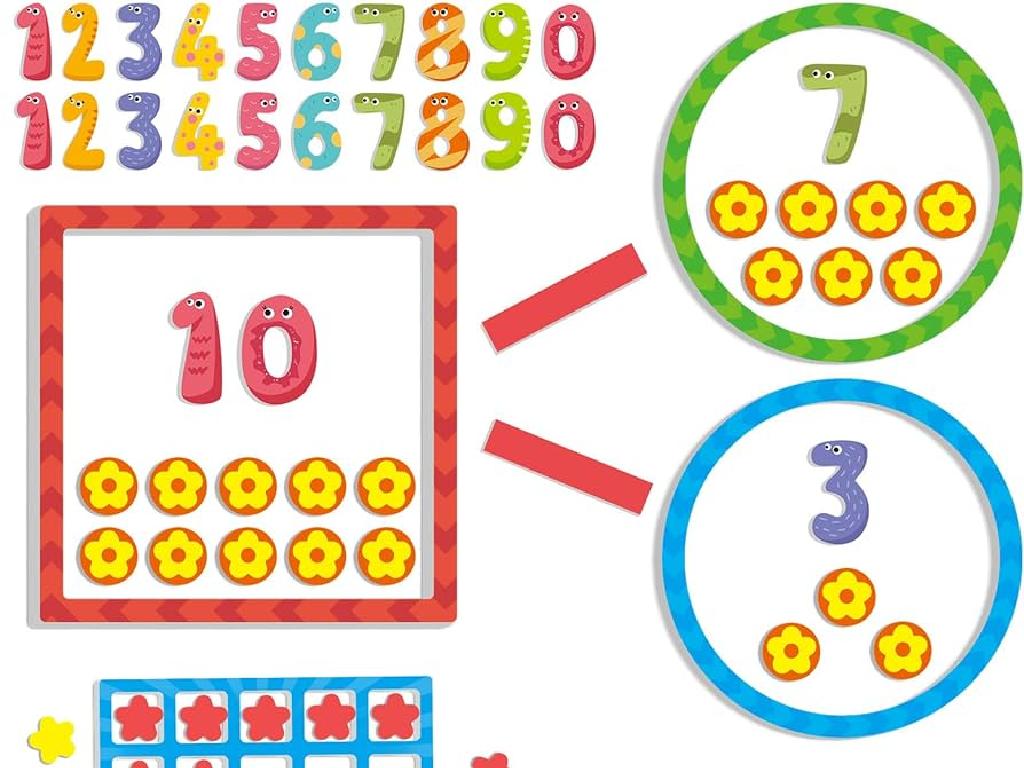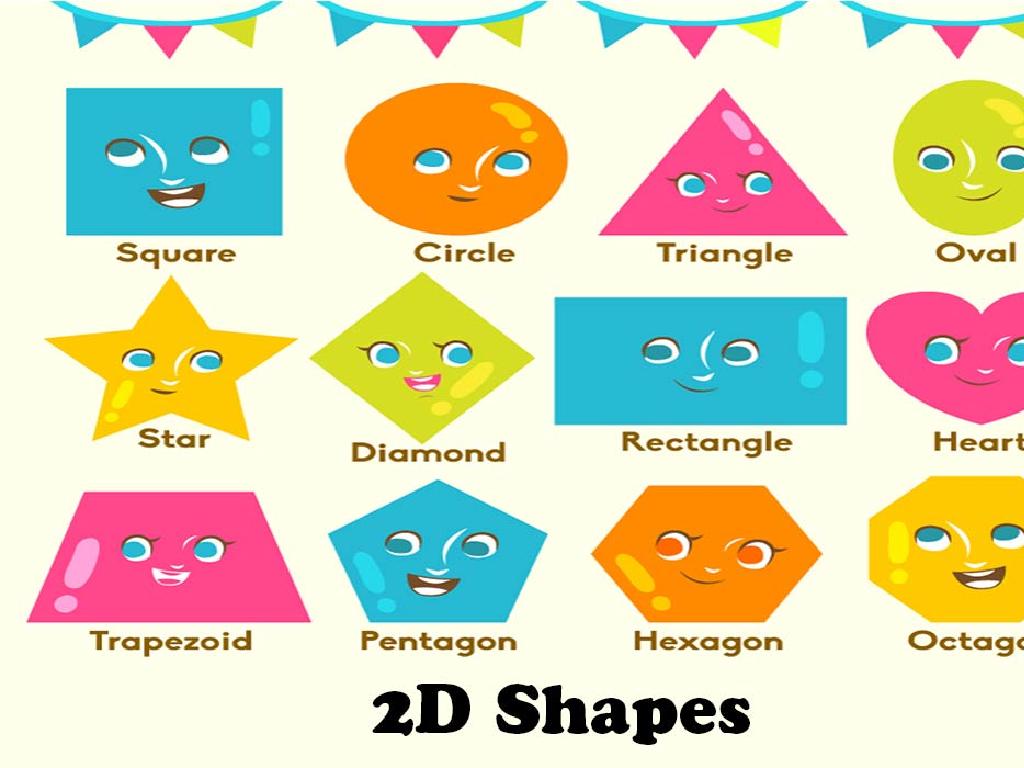Addition Sentences: True Or False?
Subject: Math
Grade: First grade
Topic: True Or False Equations
Summary: This first grade math lesson introduces students to true or false addition sentences, helping them understand how to evaluate if an equation is correct. Through hands-on activities and games, children learn to verify sums using counting objects or fingers. The presentation emphasizes the concept of equality, engages students with interactive examples, and encourages at-home practice to build confidence and mastery in basic addition concepts.
Please LOG IN to download the presentation. Access is available to registered users only.
View More Content
Understanding True or False Addition Sentences
– What are True or False Equations?
– Equations can be correct (true) or incorrect (false).
– Exploring Addition Sentences
– Addition sentences combine numbers to get a sum.
– Identifying True Equations
– True equations have sums that are correct.
– Spotting False Equations
– False equations have sums that don’t match the numbers.
|
Welcome to today’s math class, first graders! We’re diving into the world of addition and learning how to tell if addition sentences are true or false. Start by explaining that equations can be right or wrong, just like answers to questions. Show them simple addition sentences and work together to find the sum. Then, guide them to see if the sum is correct (true) or incorrect (false). Use hands-on activities like counting objects or drawing pictures to help them visualize the addition process. By the end of the lesson, students should feel confident in identifying whether an addition sentence is true or false.
Understanding Addition
– Addition combines groups
– Combining 2 sets of items makes a bigger set
– The plus sign (+) is key
– Example: 2 apples + 3 apples
– Like adding 2 apples and 3 apples together
– True or False: 2 + 3 = 5?
– Is it true that when we add 2 and 3, we get 5?
|
This slide introduces the concept of addition to first graders by explaining it as the combination of different groups of objects to form a larger set. Use everyday examples, such as combining apples, to illustrate the concept. The plus sign (+) is introduced as the symbol for addition. Provide a simple addition example with a visual representation if possible, such as images of apples, to help students understand the concept. Finally, pose a true or false question to engage the students and check their understanding. Encourage students to use their fingers or objects to add numbers together and verify the truth of the statement.
True or False Equations
– Equations can be true or false
– ‘True’ means the equation is correct
– Example: 2 + 3 = 5 is true because 2 and 3 make 5
– ‘False’ means the equation is incorrect
– Example: 4 + 2 = 7 is false because 4 and 2 make 6
– Practice with examples
– Let’s try some together to see if they are true or false!
|
This slide introduces the concept of true or false equations to first graders. Start by explaining that equations are like sentences in math that can be right (true) or wrong (false). Use simple addition examples to illustrate the point. For instance, show them that 2 plus 3 equals 5 is true, but 4 plus 2 equals 7 is false. Encourage the students to use their fingers or objects to count and verify the truthfulness of each equation. The goal is to make them comfortable with the idea of evaluating equations as true or false. During the class, have them practice with various examples and guide them through the process of determining the correctness of each equation.
Identifying True Addition Equations
– True equations balance
– Both sides have the same value
– Example: 1 + 2 = 3
– 1 plus 2 equals 3, so it’s true
– Practice finding true equations
– We’ll solve equations as a class
– Understanding equality
– Equal means the same as
|
This slide introduces the concept of true equations in addition for first graders. Start by explaining that a true equation is like a balanced scale, with equal amounts on both sides. Use simple examples, such as 1 + 2 = 3, to illustrate this point. Encourage the students to participate by finding which equations are true. Use hands-on activities like counting objects to show equality. Emphasize the meaning of the equal sign, ensuring students understand it represents balance, not just an answer. Plan a class activity where students work together to identify true equations from a list, fostering a collaborative learning environment.
Identifying False Equations
– What is a false equation?
– When both sides aren’t equal, it’s false!
– Example of a false equation
– 2 + 2 = 5 is false, because 2 + 2 is really 4
– Spotting false equations
– Look for unequal sides to find false ones
|
This slide introduces the concept of false equations to first graders. Begin by explaining that an equation is like a seesaw, and it’s only true if both sides are balanced or equal. Use simple examples to illustrate false equations, such as 2 + 2 = 5, and explain why it’s false by showing that 2 + 2 actually equals 4. Encourage the students to practice by providing several examples and asking them to identify if they are true or false. Use objects like blocks or counters to visually demonstrate the concept of balance in equations. This will help them understand that mathematics is not just about numbers, but also about ensuring that both sides of an equation make sense.
Practice Time: True or False Equations
– Let’s solve example equations
– Decide if each equation is true or false
– Use objects like blocks or fingers to help count
– Count carefully to check
– Double-check your counting for accuracy
– Share your answers with the class
|
This slide is designed for an interactive class activity where students will practice identifying whether addition sentences are true or false. Present a series of simple addition equations on the board and ask the students to solve them. Encourage the students to use physical objects like blocks or their fingers to count and verify their answers. Remind them to count carefully and check their work before deciding if the equation is true or false. After they have decided, ask them to share their answers with the class. This will help reinforce their understanding of addition and the concept of equality. Possible activities could include using flashcards, playing a true or false game, or working in small groups to solve equations and explain their reasoning.
True or False Addition Game
– Play with true or false cards
– Choose a card with an equation
– Decide if the equation is true or false
– Explain your reasoning to the class
– Use objects or fingers to show why an equation like 2+3=5 is true or 2+3=6 is false
|
This interactive class activity is designed to help first graders understand the concept of true or false in addition equations. Provide a deck of cards with simple addition equations written on them. Students will pick a card and determine if the equation is correct or not. Encourage them to use concrete objects or their fingers to count and verify their answers. After deciding, they should explain to the class why they believe the equation is true or false. This activity will not only reinforce their addition skills but also boost their confidence in speaking and reasoning. Possible variations of the activity could include working in pairs, using a timer for added challenge, or having students create their own true or false equations for peers to solve.
Wrapping Up: True or False Equations
– Congratulations on learning true or false equations!
– Addition combines groups together
– Like adding apples in two baskets to find the total
– Practice is key to mastering addition
– The more you practice, the better you get!
– Keep practicing at home for perfection
– Try simple addition problems with toys or snacks
|
This slide is meant to congratulate the students on their hard work and to reinforce the concept that addition is about combining groups. It’s important to remind them that practice is essential for mastering any skill, especially in math. Encourage them to continue practicing at home using everyday items as a fun way to learn. You can suggest that parents help their children practice by creating simple addition problems during playtime or using snacks like fruit pieces to visually demonstrate the concept of combining groups to find a total.





